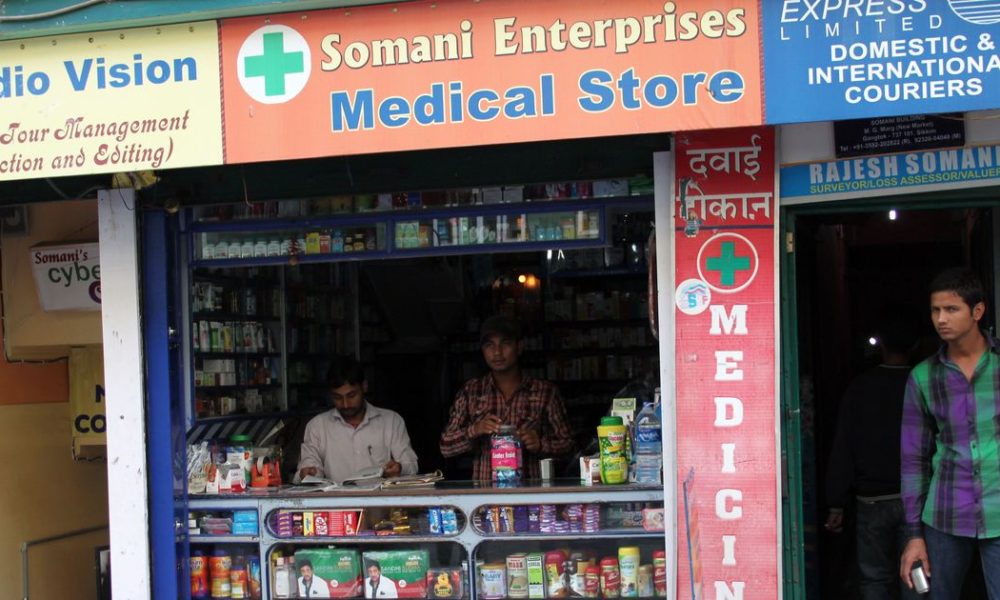
It’s estimated that India has more than 8,50,000 private pharmacies/chemists. However, just 9% of them have been engaged in efforts for controlling tuberculosis, according to a Jan 2017 paper in the Journal of Pharmaceutical Practice and Policy.
The paper reviewed public-private mix interventions to fight TB and also analysed global level documents from the WHO and the Stop TB Partnership in five phases from 2003 to 2015.
India has set a 2025 deadline to eliminate TB. This would require bringing down new cases by 95%, as FactChecker reported in March 2017.
The number of TB deaths doubled from 2,20,000 in 2014 to 4,80,000 in 2015. This rise was registered largely due to the notifications from the private sector.
As part of its revised national TB programme, India employed almost 75,000 pharmacy outlets in four states for four years from 2010 to 2014. The study found that around 10 to 15 percent of suspected cases that were referred by 7,000 pharmacists over a period of two years were found positive and placed on treatment.
“Clearly, this example illustrates not only the success of engaging retail drug outlets but also the need for steady scale up to increase national coverage,” the paper’s authors mentioned.
Almost 50% of patients rely on private sector
As per a November 2016 Lancet study, though free drugs and treatment for TB have neem made available since 1997, around 2.2 million TB patients(almost 50%) in Indian seek treatment form the private sector.
The Indian government’s draft of the National Strategic Plan for TB Elimination 2017-2025 says that the govt. considers private providers as assets to reach all TB patients. But still, the government hasn’t tapped the potential of private pharmacies in its fight against TB.
For the sake of patient convenience, public-health facilities, private medical practitioners and local points of contant like convenience stores got recognized as DOTS providers.
Why local pharmacies?
Usually, private pharmacists are from within the local community. Hence, they are not only familiar with the residents but are also available for long hours and could be contacted by patients easily.
Back in 2006, the Indian Pharamaceutical Association kicked off a pilot project to train pharmacists to detect TB. Those with symptoms would be referred to the public system in Mumbai. Nearly half of the 150 pharacists so enlisted became DOTS providers. They set up the centres in their outlets.
Pharmacists see patients who frequently visit them with TB symptoms like prolonged coughing. They could then refer these patients to govt facilities for further tests so that they would get treatment on time. As for the patients, visiting the pharmacists is more convenient and also has less stigma associated with it.
The project got scaled up to four states by 2010.
A couple of years later, in 2012, the revised TB program signed a memorandum of understanding with the Indian Pharmaceutical Association and other similar organizations to “engage pharmacists in RNTCP(revised national tuberculosis control programme) for TB care and control in India.”
By 2017, this partnership was running in eight Indian states: Tamil Nadu, Karnataka, Goa, Maharashtra, Gujarat, Uttarakhand, Madhya Pradesh and Haryana. Just in Maharashtra, 134 pharmacies were engaged in four municipal corporations. Out of these, 70 became DOTS providers. Since then, they have referred more than 68 patients and treated 500 patients in their pharmacies.
Moving ahead at a snail’s pace
The revised TB program has planned to scale up engagement to reach around 5,00,000 pharmacies through the efforts of Indian Pharmaceutical Association. The plan was made at least by 2012. However, by 2015, just 75,000(15% of the target) were engaged in the initiative.
This is clearly a missed opportunity.
“We know what works and we no longer need ‘pilot initiatives’–it is time to marshal resources and scale up private pharmacy efforts as part of RNTCP’s broader private sector strategy,” said, Niranjan Konduri, co-author of the January 2017 paper, in an interview to IndiaSpend.
He also added that India could help prevent antimicrobial resistance by rational dispensation of antibiotics through effective regulation. The cooperation of the state food and drug administration, TB control department and pharmacists would do good, he says.
As per Manjiri Gharat, Vice-President and Chairman, Community Pharmacy division, Indian Pharmaceutical Association, “If RNTCP integrates pharmacists all across the country, the impact would be manifold.”
Image credits: scroll.in